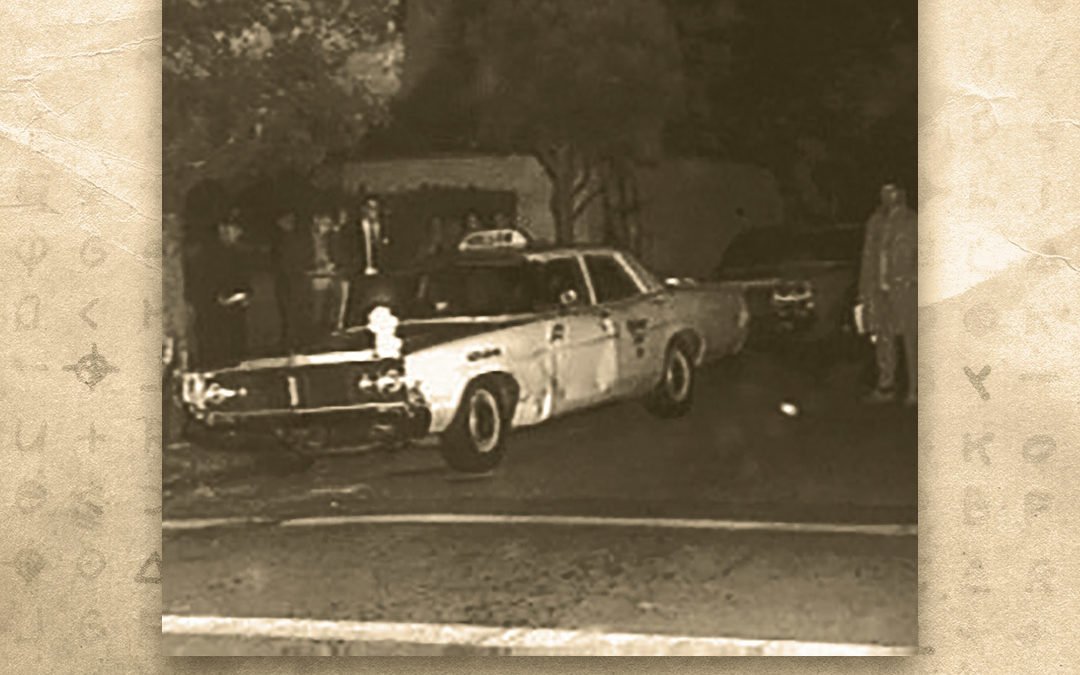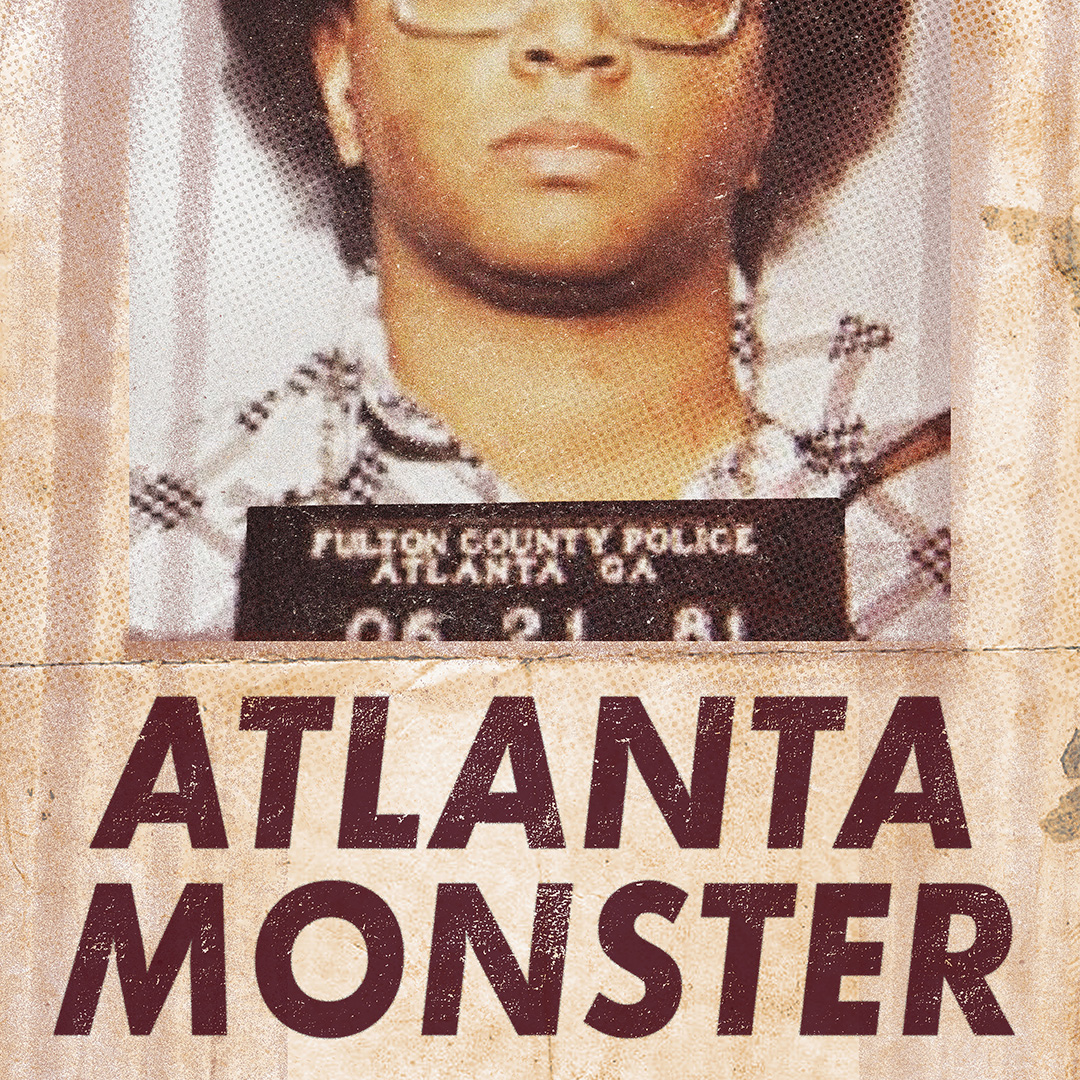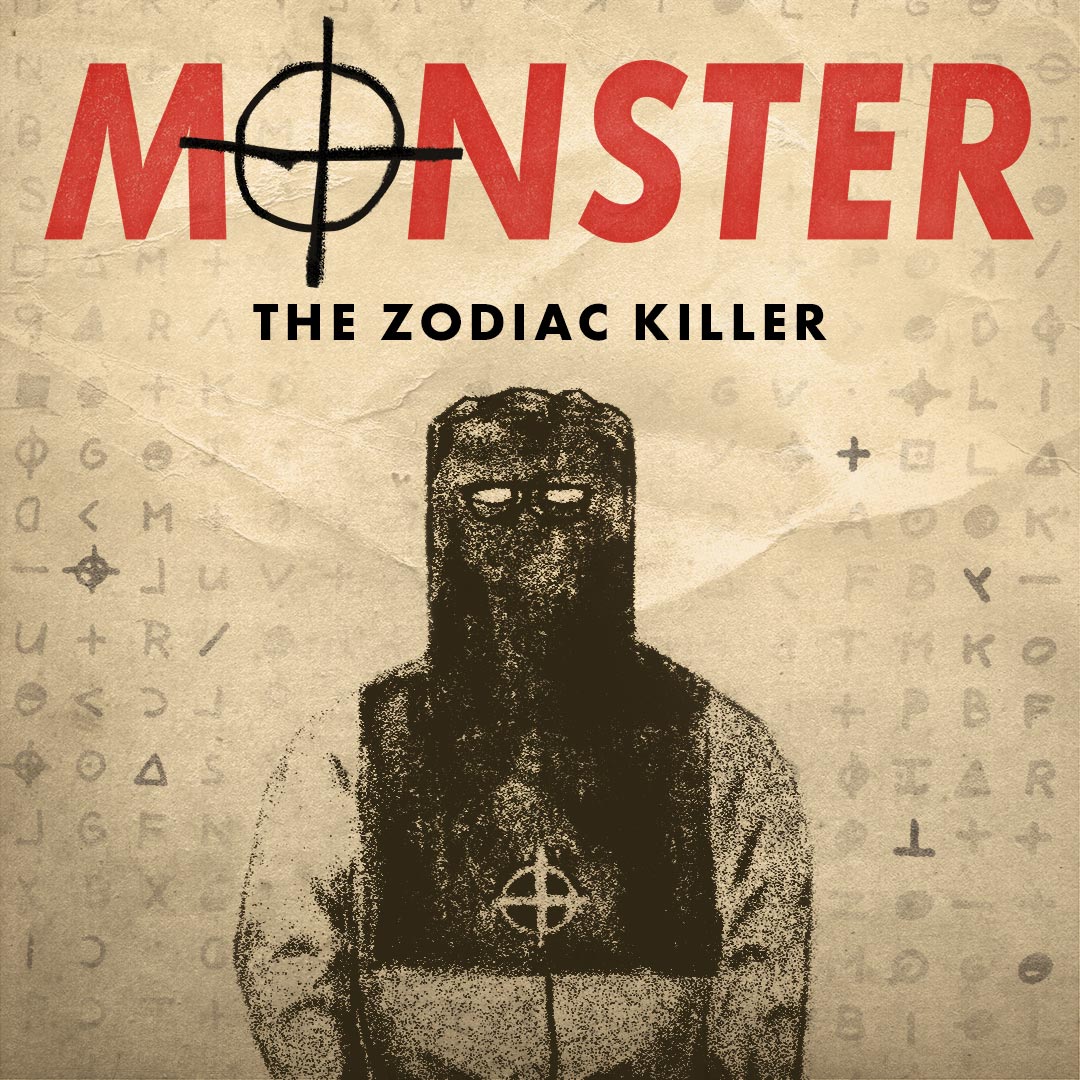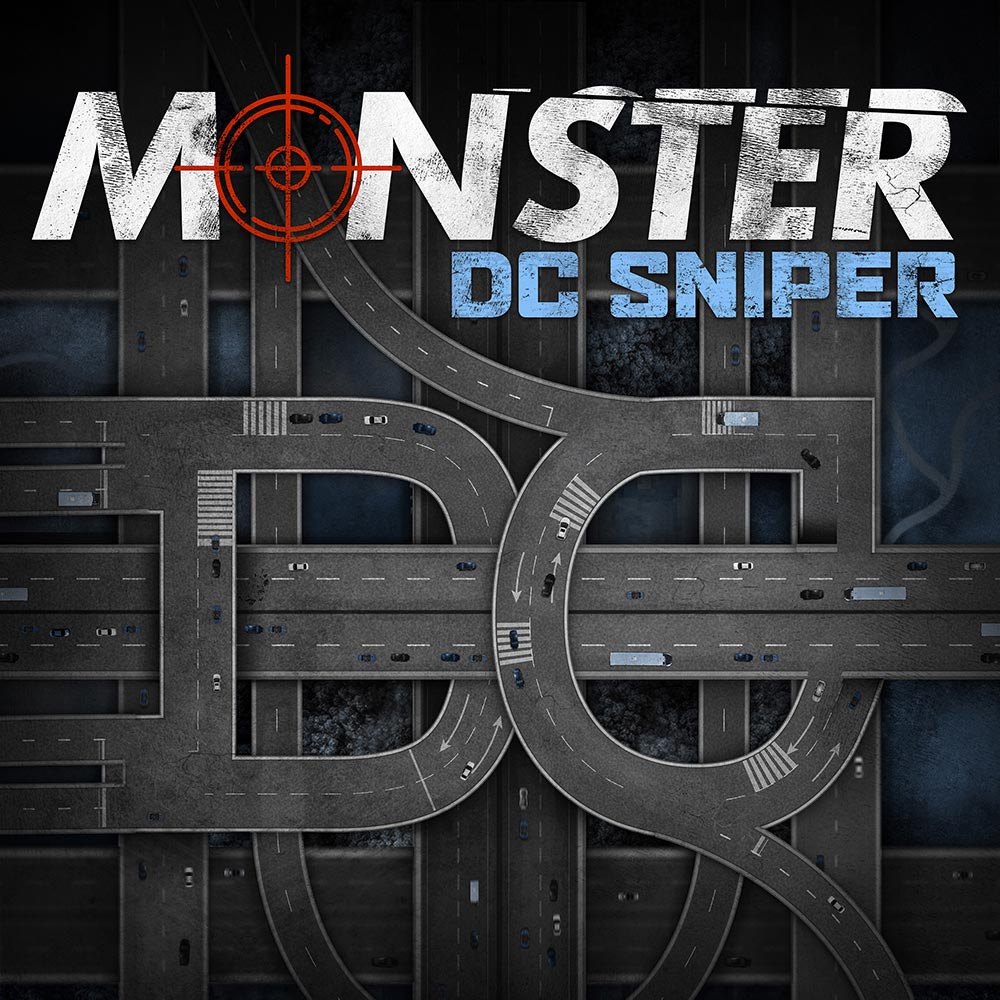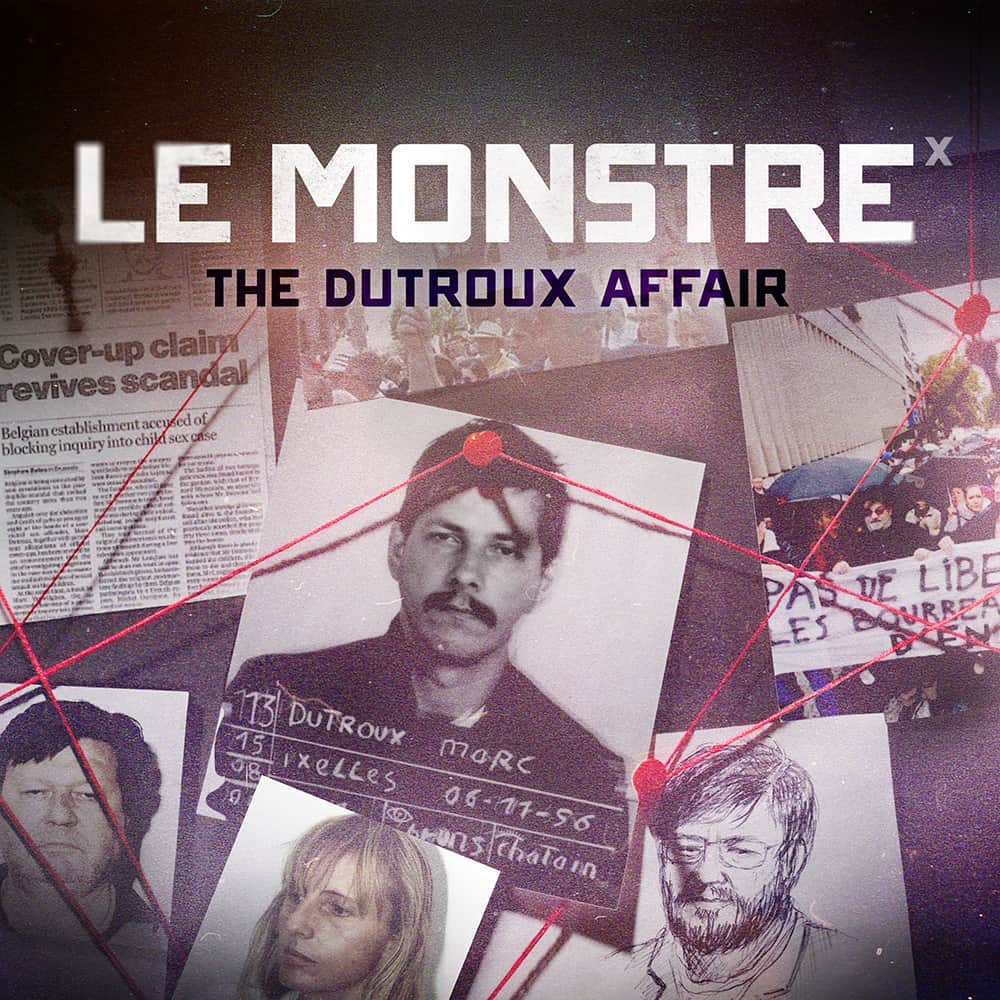5 • Taxi Driver
Zodiac moves to the City by the Bay.

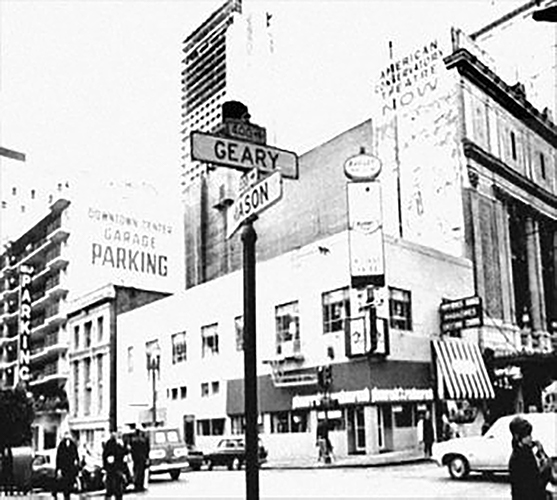
Paul Stein…didn’t have a chance. He had no idea. He didn’t know that the passenger he picked up had other plans.
– Michael Butterfield, Zodiac expert
The fear factor went way up that now he’s in San Francisco.
– Duffy Jennings, former reporter, SF Chronicle
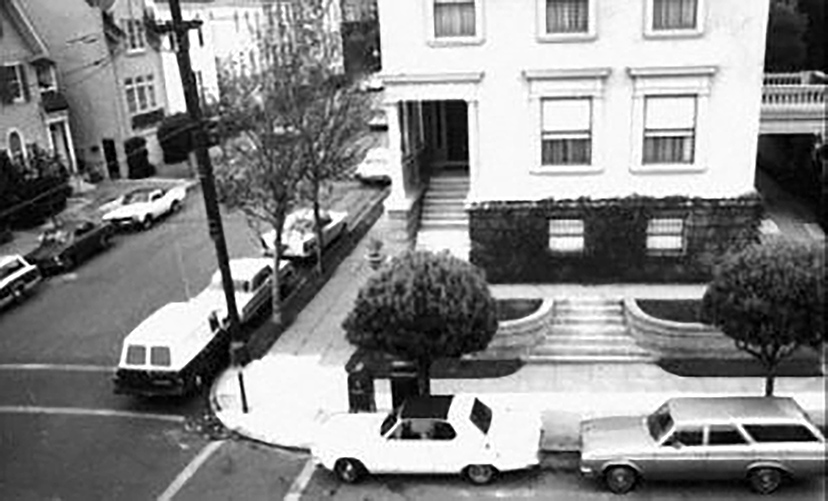
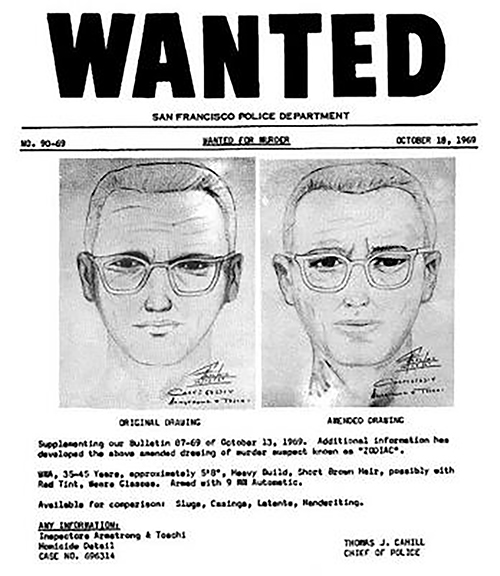
I am the murderer of the taxi driver over by Washington Street and Maple Street last night.
Transcript
Speaker 2: After the attack at Lake Berryessa, the Zodiac fell silent. There were no more letters. There were no more phone calls after that initial phone call to the Napa Police department. We don’t know why. But two weeks after the attack at Lake Berryessa, the Zodiac resurfaced in San Francisco. While he had already sent a letter to the San Francisco Chronicle establishing himself as a link to San Francisco, he hadn’t committed any crimes there that we knew of.
Speaker 3: In the newsroom, our ears perked up, obviously, a little more about this kind of case. Now you’ve got three cases, and one guy claiming responsibility and providing in some of these letters details that only the police would know, so they’d verify that he was at the actual scene. But it wasn’t until October 11th, 1969, when Zodiac first struck in San Francisco, that I think the Chronicle went into full-on serial killer mode, if you will, for a couple of reasons.
Speaker 3: One is in this case, Zodiac hailed the taxi in front of the theater, the Curran Theater, on Geary Street in San Francisco. He asked to be taken out to a fairly upscale neighborhood called Presidio Heights, where he instructed the driver to stop. Once he stopped, he asked him to go another block for reasons no one’s ever figured out. When they got to the next corner, Zodiac shot the guy in the back of the head and killed him. This cab driver’s name was Paul Stein.
Speaker 4: A man in a mask robbed, tied, and stabbed them, leaving them for dead.
continue reading
Speaker 5: Subject stated, “I want to report a murder. No, a double murder. I did it.”
Speaker 6: A man who wore a medieval-style executioner’s hood carried a knife and gun and intended to use them.
Speaker 7: They haven’t arrested me because they can’t prove a thing. I’m not the damn Zodiac.
Speaker 8: Who is the Zodiac and where is he?
Speaker 9: From iHeartRadio, HowStuffWorks, and Tenderfoot TV, this is Monster, the Zodiac Killer.
Speaker 9: Taxi drivers are the unspoken experts of their cities, the unofficial tour guides, per se. In a big city like San Francisco, taxi drivers are ubiquitous. They’re everywhere. They’re a constant, a given. Because of this, they were also an easy target for the Zodiac. Think about it. There are few people more trusting of strangers than a taxi driver. They pull over, pick you up, drop you off. Sometimes you never even see their face or exchange names. There’s intimacy. Here you are, sharing this small place with a stranger. Do you really know who’s in the car with you?
Speaker 9: The Zodiac didn’t stalk his victims for weeks. He chose them at random because of their environment, their unawareness, and in some cases their occupation. What’s more frightening than someone who preys on the unexpecting?
Michael B.: San Francisco is directly linked to the Zodiac killer. There’s no escaping it, which is ironic because it’s not where he started. He started in Vallejo and Benicia.
Speaker 9: This is Zodiac expert Michael Butterfield.
Michael B.: Maybe that was something that he wanted. Maybe he lived in San Francisco. Maybe it was easier to write to the San Francisco Chronicle and make sure that he could read that newspaper than it was to drive all the way to wherever he had to go to get a Vallejo Times-Herald. I don’t know. One thing that we know for sure is that the Zodiac wanted the attention that he wanted when he wanted it.
Michael B.: Now, what he wanted in July of 1969 was for as many people to see this as possible, to get as much attention as possible, and to cement his image as a real threat, and it worked. Then after that, I think one of the things that he started to realize was, “I’m going to do better if I keep going to the Chronicle than if I keep going to another newspaper.” There’s some evidence that the Vallejo Times-Herald was not as willing to keep playing this game with him. Maybe he sensed that. Maybe when he was looking at their coverage, he didn’t like what he saw. After that, he started focusing on the San Francisco Chronicle, and they were happy to play along.
Peter Richardson: Well, the key papers in San Francisco were the Chronicle and the Examiner. They were very different. At the end of the day, the Examiner was a kind of symbolic power, but it was losing its circulation war with the San Francisco Chronicle.
Speaker 9: Here’s Peter Richardson, historian, and lecturer at San Francisco State University.
Peter Richardson: The Chronicle was never a gray paper journalistically, but they had some very interesting columnists. It was kind of a fun read for that reason. But the city had never really distinguished itself journalistically. It didn’t have a paper during this time like the Los Angeles Times, much less the Washington Post or the New York Times. They were widely read, but they were not any great shakes.
Speaker 9: Despite this, the San Francisco Chronicle had the highest readership in the Bay area, and Peter Richardson says that this was the only thing that mattered to the Zodiac.
Speaker 10: The psychotic killer has already murdered five, one at a lovers’ lane near a lake just north of San Francisco, three others in nearby Vallejo, the latest a taxi driver in San Francisco.
Speaker 11: He apparently was in the area of Mason and Geary in San Francisco and hailed a cab, and that cab was being driven by Paul Stein, who was a student and a husband. The plan was to direct Paul Stein to the intersection of Washington and Maple, which was in an upscale neighborhood of San Francisco known as Presidio Heights. From what we know, Paul Stein took the passenger to that location.
Speaker 11: What we don’t know is why the cab eventually ended up one block further west at Washington and Cherry Streets. Some kids were in a house across the street, and they heard some kind of commotion and looked out the window, and they saw a man in the front seat doing something to the cab driver. They thought that he was stabbing him or doing something to him. They watched as the man handled the driver, and then they called the police. Apparently, while they were talking to the police dispatcher, and they were describing what they were seeing, something went wrong. Instead of describing the killer as a white man, the radio dispatch to responding officers described the killer as a black man.
Speaker 11: The witnesses watched as the man finished whatever he was doing in the cab. He got out of the cab. He walked around to the driver’s side and appeared to have some sort of light-colored cloth in his hand as he was wiping down the cab or doing something on the driver’s side of the cab. He then turned and walked north up Cherry Street.
Duffy Jennings: Two days later, the Chronicle received a letter, and only the Chronicle, from the Zodiac.
Speaker 9: This is former reporter Duffy Jennings. He was there when the San Francisco Chronicle received this now-infamous letter.
Duffy Jennings: As the woman opened it in the editorial department, a piece of bloody shirt fell out with the letter.
The Zodiac: This is the Zodiac speaking. I am the murderer of the taxi driver over by Washington Street and Maple Street last night. To prove this, here is a blood-stained piece of his shirt. I am the same man who did in the people in the North Bay area.
Duffy Jennings: They knew that this was Paul Stein’s killer, and now he’s again taunting police to catch him. The fear factor went way up that now he’s in San Francisco.
Thomas Cahill: Captain Lee, at this particular time, is satisfied that the individual who sent this piece of shirt in and the letter to the Chronicle was, in fact, connected with the … is the person who killed the cab driver, let me put it that way.
Speaker 12: Based on what?
Thomas Cahill: The contents of the letters, the language of the letters, in other cases are very similar to the language and the form of the letters in this particular case. Because of the fact that the shirt matches the shirt, as I understand it, we would have to assume that there is validity to the claim of this individual.
Speaker 9: That was San Francisco Police Chief Thomas Cahill. The SFPD confirmed the killer was, in fact, the Zodiac. They knew this because the striped cloth found in the letter matched the striped shirt Paul Stein was wearing. When investigators checked Paul Stein’s shirt, they found that a rectangular portion was missing. With the San Francisco Police Department involved, this crime now crossed over multiple cities and jurisdictions, and those individual departments weren’t necessarily working together.
Speaker 9: In Napa, where the last murder occurred at Lake Berryessa, sheriffs had made their own assessment of the murder in San Francisco.
Speaker 13: Well, preliminary tests of certain evidence such as fingerprints and handwriting have been made to where we are certain that the man that we’re looking for is the same man responsible for the killing of the cab driver in San Francisco, plus the shooting deaths in Solano County in Vallejo.
Speaker 14: Sheriff, what type of person is this man?
Speaker 13: Well, we have reason to believe that he’s a maniac. However, he is a cunning man. He knows just exactly what moves he’s going to make. He knows where he’s going to be from one minute to the next. He knows where he’s going to start and when he’s going to end. He plans these things out, and he knows just exactly how this thing is going to turn out. We think that he’s … It appears to us that he is killing just for the thrill of killing.
Speaker 9: How did the killer avoid the police in Presidio Heights?
Speaker 15: So how did the killer avoid the police in Presidio Heights? In the bloody shirt letter, the Zodiac gave his own account of what happened that night.
Speaker 16: The San Francisco police could have caught me last night if they had searched the park properly instead of holding road races with their motorcycles, seeing who could make the most noise. The car drivers should have just parked their cars and sat there quietly waiting for me to come out of cover.
Speaker 15: But there was more. In another letter sent just a few weeks later, Zodiac gave even more details about what happened after Paul Stein’s murder.
Speaker 16: If you wonder why I was wiping the cab down, I was leaving fake clues for the police to run all over town with. As one might say, I gave the cops some busy work to do to keep them happy. I enjoy needling the blue pigs. Hey blue pig, I was in the park. You were using fire trucks to mask the sound of your cruising prowl cars. The dogs never came within two blocks of me, and they were to the west. And there was only two groups of parking, about 10 minutes apart. And then the motorcycles went by about 150 feet away going from south to northwest.
Speaker 16: PS, two cops pulled a goof about three minutes after I left the cab. I was walking down the hill to the park when this cop car pulled up, and one of them called me over and asked if I saw anyone acting suspicious or strange in the last five to 10 minutes. I said yes. There was this man who was running by waving a gun, and the cops peeled rubber and went around the corner as I directed them. And I disappeared into the park a block and a half away, never to be seen again.
Michael B.: Paul Stein, unlike the other victims, became a victim because of his job. That seems very unfair to me and I know that’s an odd way to describe it, but he didn’t have a chance. He had no idea. He was just doing what he thought he was supposed to do. He thought he would take this person where he wants to go and go on his way. He didn’t know that the passenger he picked up had other plans.
Speaker 16: This is Michael Butterfield again. He’s interviewed numerous people who were on the scene that night.
Michael B.: And while the kids were watching the first responding police officers arrived. That was Frank Peta and Armand Pelissetti. Armand Pelissetti told me and several interviews I did with him over the years that he arrived at the scene, he saw the kids coming out of the house. He directed them to stand back. He asked his partner to watch the area, to guard the crime scene, and he approached the cab with a flashlight.
Michael B.: He said that when he got near the driver’s side, he could see some sort of impression on the outer door that appeared to be blood and maybe fingerprints. He then looked inside the cab, and he saw Paul Stein’s body lying in the driver’s seat. And according to Pelissetti, it was obvious that he was dead.
Michael B.: Pelissetti then walked north on Cherry street and pursuit of the killer. And at some point, he encountered two other police officers who were responding, Officers Don Faulk and Eric Zelns.
Michael B.: At some point, the description of the killer was corrected to that of a white man.
Speaker 16: According to the new witness description, the killer was a white male in his early 40s. He was about 5’8 with a heavy build. He had reddish blonde hair, a crew cut, and he wore eyeglasses and a dark parka jacket.
Michael B.: And when that happened, apparently Don Faulk realized that that was a man that they had driven past on their way to the crime scene. So Faulk and his partner turned around and went back and went looking for the killer. They did not find him.
Michael B.: Pelissetti kept walking and didn’t see anything. By that time then the fire department and other investigators were arriving. They did find some fingerprints in that area where Armand Pelissetti thought he had seen some fingerprints and those prints were found in the exact area where the killer was last seen making contact with the cab. According to the witnesses, no one touched that cabin between the time that the killer walked away and Armand Pelissetti arrived. So that’s a strong indication that those fingerprints did belong to the killer.
Speaker 16: I had a lot of questions about the murder of Paul Stein. Why would the killer change his MO so dramatically again? The Zodiac had previously focused on young couples in isolated areas, and his weapon of choice was a handgun. He escalated his attacks when he wore a costume, then tied up and stabbed the couple at Lake Berryessa. This time he went back to his regular clothes and back to his gun to kill a lone male cab driver. It just didn’t make sense to me.
Speaker 16: To better understand, I first wanted to retrace the Zodiac steps that night to take the same route in the back of a taxi. So I started were heated near the intersection of Mason and Geary in the Tenderloin District. There’s a theater nearby that the Zodiac may have gone into.
Oliver Sutton: My name is Oliver Sutton. I am head of security for the ACT Theater for more than 20 years. I’ve known this area virtually all the time I’ve lived in San Francisco.
Oliver Sutton: The Zodiac, the first murder to take place in San Francisco, a patron came out of the ACT Theater. At that time it was the Geary and ACT, American Conservatory Theater. I don’t know what show was going on at that time, but he could’ve just gone into the lobby, used that as a backdrop. Or he could actually been a patron of ACT that came out, hailed a taxi and murdered him. I’ll take you into the lobby, turn the lights on and give you a chance to see where it took place.
Oliver Sutton: This is the actual lobby of the, let me turn the lights on. So the killer, he would have come through these double doors. They filmed it that way for the movie, that he walked out of these double doors and hailed down a yellow taxi, a yellow cab.
Oliver Sutton: Being a hack in any city is tough because you don’t know who’s getting in the back seat of your car. According to the story, the victim was not chosen. It was just a random victim, crime of opportunity.
Speaker 16: From there, the killer called the taxi and was picked up by Paul Stein, so I called a cab too. I asked to be taken to the corner of Washington and the Cherry Street in the Presidio Heights neighborhood. It was about three miles west, 15 minutes by car, and oddly enough, my cab driver’s name was also Paul.
Paul: The senator, she lives over there. Dianne Feinstein.
Speaker 16: Oh Feinstein, really?
Paul: Yeah, she lives over in that area.
Speaker 16: Paul and I got to talking. He had heard about the Zodiac case but didn’t know much of the details. He asked me how many people the Zodiac had killed. I told him how many the police had confirmed. He wasn’t impressed.
Paul: He’s small time.
Speaker 16: I know and he.
Paul: He’s small potatoes.
Speaker 16: He shot a ton of people. The reason why it’s such a big deal is because he was constantly writing to The Chronicle.
Paul: Because he was one of the first ones.
Speaker 16: He was. He was one of the first. And he was in the paper.
Paul: When he did something, he made sure that the police knew it was him that did it right?
Speaker 16: Yeah, he would send …
Paul: He wanted to really claim I did that one. I don’t want nobody else to try to claim it as their glory. This is me, I did it.
Speaker 16: Well, here’s where it gets crazy though man. Because he, in the beginning, with that one, Paul Stein, he sent a piece of the guy’s cloth with his blood on it in his letter to The Chronicle.
Paul: And it was a cab driver, right?
Speaker 16: It was a cab driver, yeah. Named Paul.
Paul: Guess what, my name’s Paul. That’s spooky, man. I got bumps, I got goosebumps on me. You’re not related to the Zodiac, are you?
Speaker 16: When we arrived on the scene of Paul Stein’s final moments, I got out and just listened for a while. A few cars drove by, but there wasn’t much, if any, foot traffic. It felt like a different universe from the bustling city that was just a few blocks away.
Speaker 16: That’s when I realized the Zodiac sought out these types of locations. Quiet, unassuming areas, places that seem almost peaceful, miles away from anywhere you might consider dangerous. A country road, a public park in a popular vacation spot on a lake. In this case a beautiful, upscale neighborhood in San Francisco. It made me wonder, did Zodiac want to strip away the feeling of safety from these places?
Speaker 16: And as I’m standing there lost in this thought, I see a man walking towards me. He’s carrying some takeout. He asked me what I was doing, and we got to talking. The man requested we not use his name and we altered his voice for privacy because it turns out he was related to someone who witnessed Paul Stein’s murder.
Speaker 17: So it was my father, who has actually since passed. He was just a kid. He was a kid, and he was just playing downstairs, and he just looked outside the window and saw a yellow cab. And kids being kids, they are nosy, and they looked in, and I guess from my memory of what I was told, saw someone slouch over in the car who, come to find, was a culprit of the Zodiac. And he called the police.
Speaker 17: And his family, or his mom and dad, were down the street at a party and he called them, this is crazy, I think someone just got murdered. Police came, and that’s what they came to find. He’s been hassled by every investigator since trying to solve it. But I don’t think they ever found him.
Speaker 17: He didn’t like talking about it that much but I think it was either from that window there, the first floor, or it was from the third floor. I’m pretty sure it was from the first floor. But I think he did feel some sort of weight of responsibility of give accurate information to help this crime. I mean, he was young. I think he was only 12.
Speaker 18: The Zodiac’s move to San Francisco meant there would a lot of changes in the investigation. One of them was that that was the first time he had struck in a major metropolitan city, which meant that a major metropolitan police force would be assigned to the case. Two of the investigators assigned to the case who arrived at the crime scene that night were David Toski and Bill Armstrong. Dave Toski was sort of known as a celebrity cop. He liked media attention. People who lived in San Francisco were accustomed to seeing his name in the newspaper or his face on television. When the Zodiac crimes started, that just naturally increased because now, he was in charge of the hunt for the biggest serial killer in California history. He was identified primarily as the Zodiac cop. In the movie Bullet, Steve McQueen supposedly based a lot of his character on Dave Toschi, including the way he held his gun and things like that. There’s also stories that movie Dirty Harry was inspired by the battle between Toschi and the Zodiac.
Speaker 19: There’s a madman loose. Get the message to The Chronicle. We’ll agree to pay, but we’ll tell them we need time to get the money together.
Speaker 20: William, do I get this right? You’re going to play this creep’s game?
Speaker 19: It will get us more breathing space.
Speaker 20: So, it might get somebody killed.
Speaker 18: Toski and Armstrong investigated the scene, and at a certain point, those fingerprints were discovered. There was also a pair of gloves that were found underneath one of the seats, I believe, as well as a shell casing that appeared to come from the Zodiac’s weapon.
Speaker 27: The bullet came from a nine-millimeter pistol, but it was not the same nine-millimeter used to kill Darlene Ferrin. Toski and Armstrong would also discover that the gloves belonged to a previous customer of Paul Stein.
Speaker 18: All of this evidence was gathered. The witness statements were taken, and a composite sketch of the killer was drawn up with the assistance of these witnesses.
Speaker 18: Toski and Armstrong, at the time, thought that they were investigating what you might call a routine robbery. It was not unusual for cab drivers to be robbed or even shot in San Francisco. So, when they were investigating those first two days, they thought they were looking for a career criminal, somebody with a record who’d probably committed this kind of crime before, and someone who could be readily identified by searching through the pool of usual suspects.
Speaker 18: They had no idea that in two days, the San Francisco Chronicle would receive a letter from the Zodiac, taking responsibility for the murder of Paul Stein, which also included a piece of Paul Stein’s shirt, to remove any and all doubt that he was actually responsible.
David Toski: Since the release of the latest letter yesterday, our office has received additional from persons in the Bay Area who feel that they can be helpful in the apprehensions of the Zodiac suspect.
Speaker 27: This is Inspector David Toschi, speaking with KPIX news in 1969.
David Toschi: My partner, Inspector Armstrong, and I, who are handling the case, have received several phone calls this morning and this afternoon and various informants who have given us some information as to names, addresses, and locations that we have checked out and are checking out at the present time. It’s generally stirred up quite a bit of interest.
Speaker 18: This, of course, changed the entire investigation. Toski and Armstrong thought it was a simple crime, and now, they were involved in what was possibly the most explosive manhunt in California history.
Speaker 18: Obviously, moving to San Francisco, changing his victim preference, acting out in a much different kind of crime, sending scraps of victim’s clothing in the mail, this was all a new level, a next step for the Zodiac. It was much more terrifying than where he was before. But also, it sort of began this feud between the San Francisco Police Department and the Zodiac. Part of that seems to have come from the fact that the Zodiac did escape the police that night, and if he did remain in the area and watched them searching for him and watching them fail, that must have done a lot for his ego. He must have felt very powerful. He must have felt invincible.
Speaker 21: But this was just the beginning of the San Francisco chapter. In the last part of the bloody shirt letter, Zodiac had one more threat.
Speaker 22: School children make nice targets. I think I shall wipe out a school bus some morning. Just shoot out a front tire, and then pick off the kiddies as they come bouncing out. Signed, Zodiac.
Speaker 23: School children are nice targets. I shall wipe out a school bus some morning, shoot out the tires, and then pick off the kiddies as they come bounding out.
Speaker 23: That was the threat of the Zodiac killer. Now, every day, police cars follow the buses, which would be likely targets. Officers, armed with shotguns, take the threat seriously.
Speaker 24: I think that was the thing that ratcheted up the paranoia and the fear around this Zodiac guy, who, by now, was a mythical figure of a hulking guy, walking around the streets, who could not just kill a couple of kids at a Lover’s Lane, but anybody could be the next victim.
Speaker 25: Next time, on Monster. The Zodiac killer.
Speaker 26: We have a number of plainclothes officers following buses in the morning and in the evening.
Speaker 24: I remember, as a kid, having a cop car follow behind us, and I remember that ’cause as kids, we would all kind of run to the back of the bus and wave at the cop.
Speaker 18: The media frenzy that resulted, predictable as it was, was a huge part of the story itself. In some ways, we start to see the media become a player in the stories that they’re covering.
Speaker 29: It was just a sense of not knowing what would happen next, especially after these letters start coming, threatening to sort of escalate the violence, and people not knowing whether that was serious or not.
Speaker 23: You’re not afraid?
Speaker 28: No, I’m not.
Speaker 30: No.
Speaker 30: Not too afraid.
Speaker 18: But that wasn’t enough for him. Then he moved on to the next level, where he started threatening to blow up a school bus full of children.
Speaker 22: The death machine is already made.
Speaker 21: Monster, the Zodiac Killer, is a 15-episode podcast, produced by iHeartRadio, HowStuffWorks, and Tenderfoot TV. Donald Albright and I are executive producers on behalf of Tenderfoot TV, alongside producers Meredith Stedman, Mason Lindsey, and Christina Dana. Jason Hoch is executive producer on behalf of HowStuffWorks, along with producers Trevor Young, Miranda Hawkins, Ben Kuebrich, and Josh Thane. Scott Benjamin provides additional voice talent. Matt Frederick is our host. Original music is by Makeup and Vanity Set.
Speaker 21: If you haven’t already, make sure to check out the first season of Monster, called Atlanta Monster, about the Atlanta child murders in the last 70s to the early 80s. Download the 10-episode season right now.
Speaker 21: Have questions or comments? Email us at monster@howstuffworks.com, or you can call us at 1-833-285-6667. Thanks for listening.
Episodes
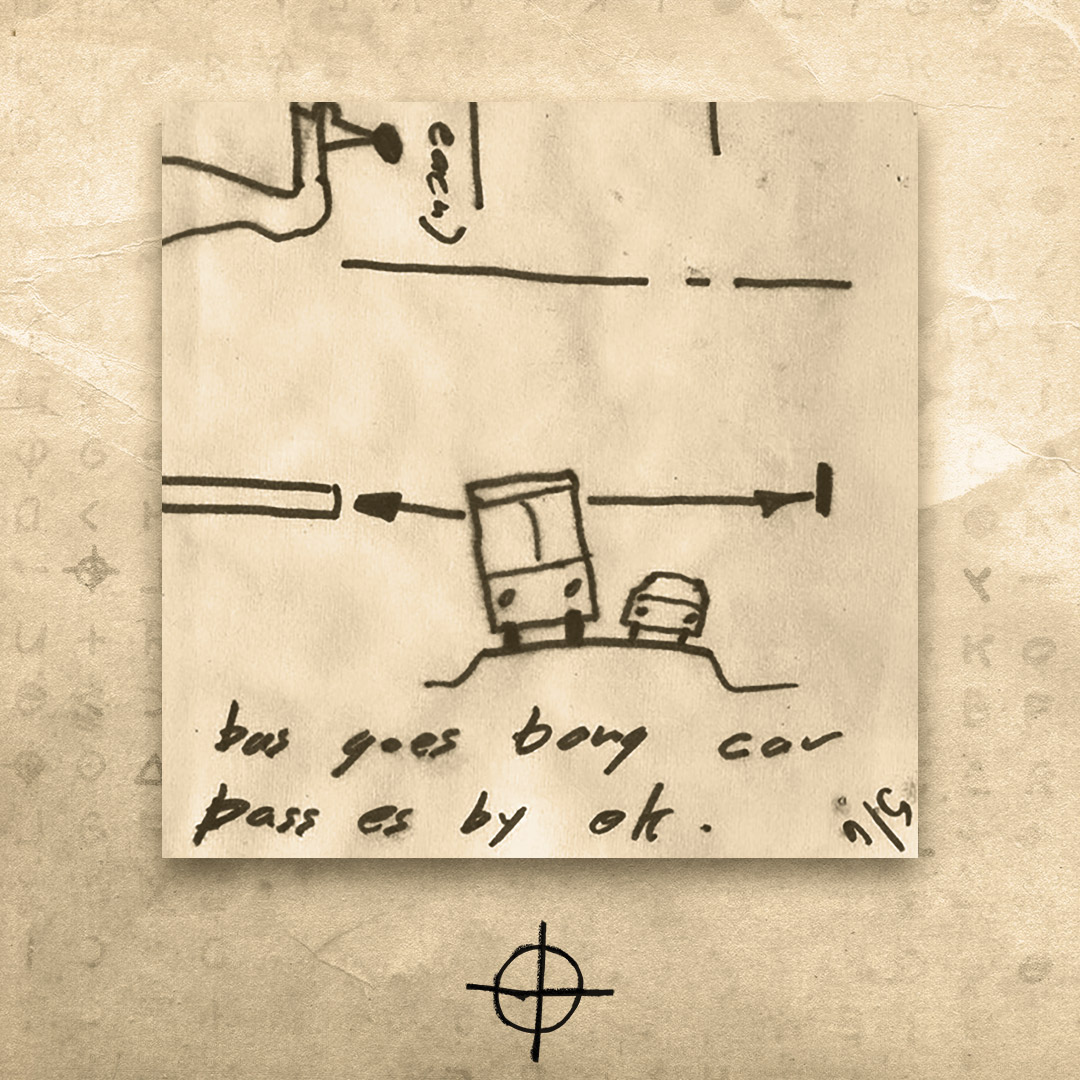
6 · School Bus
Zodiac is making threats which now target children. And he says he’s making a bomb.
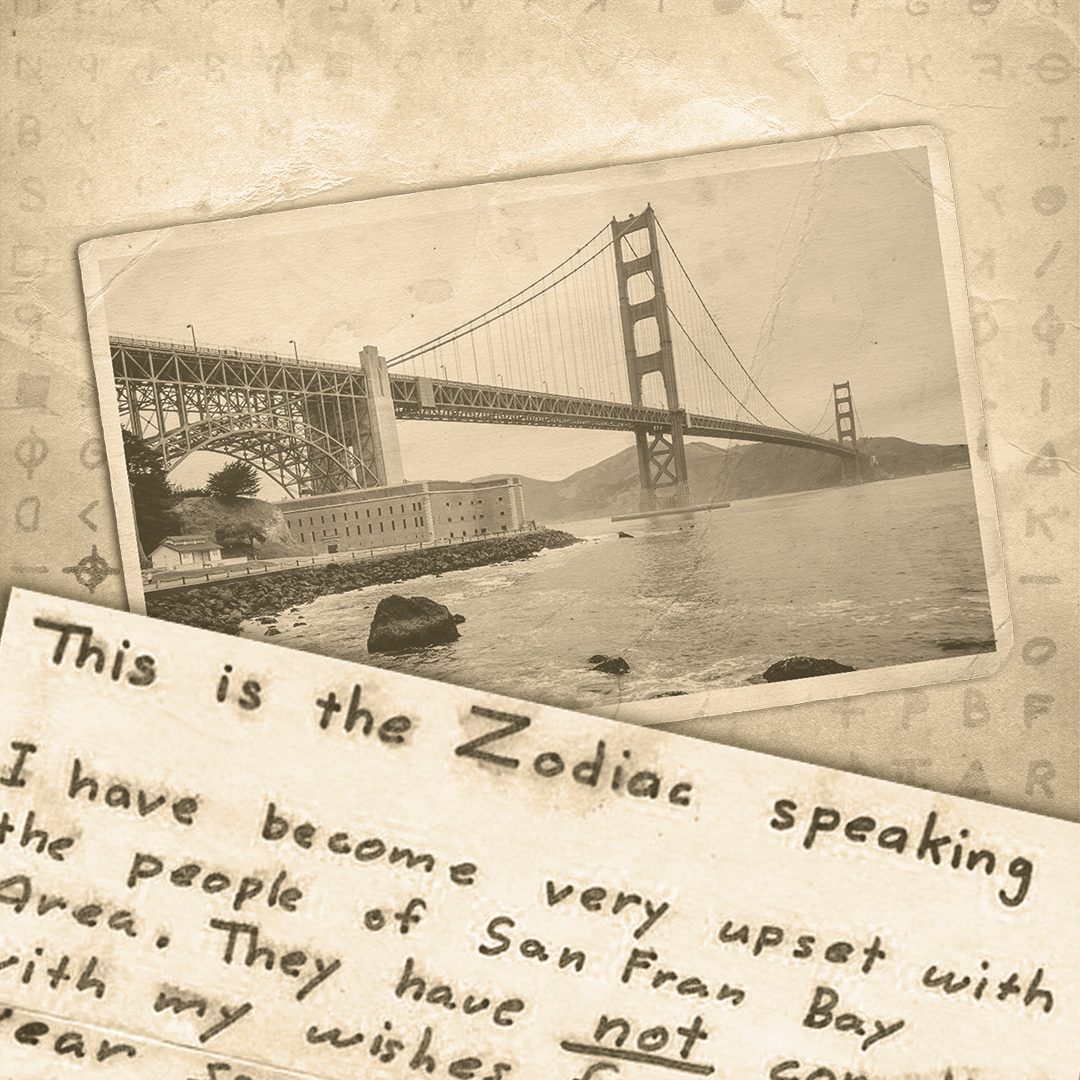
7 · Prime Time
After an impromptu TV appearance, the Zodiac fights to stay in the limelight.
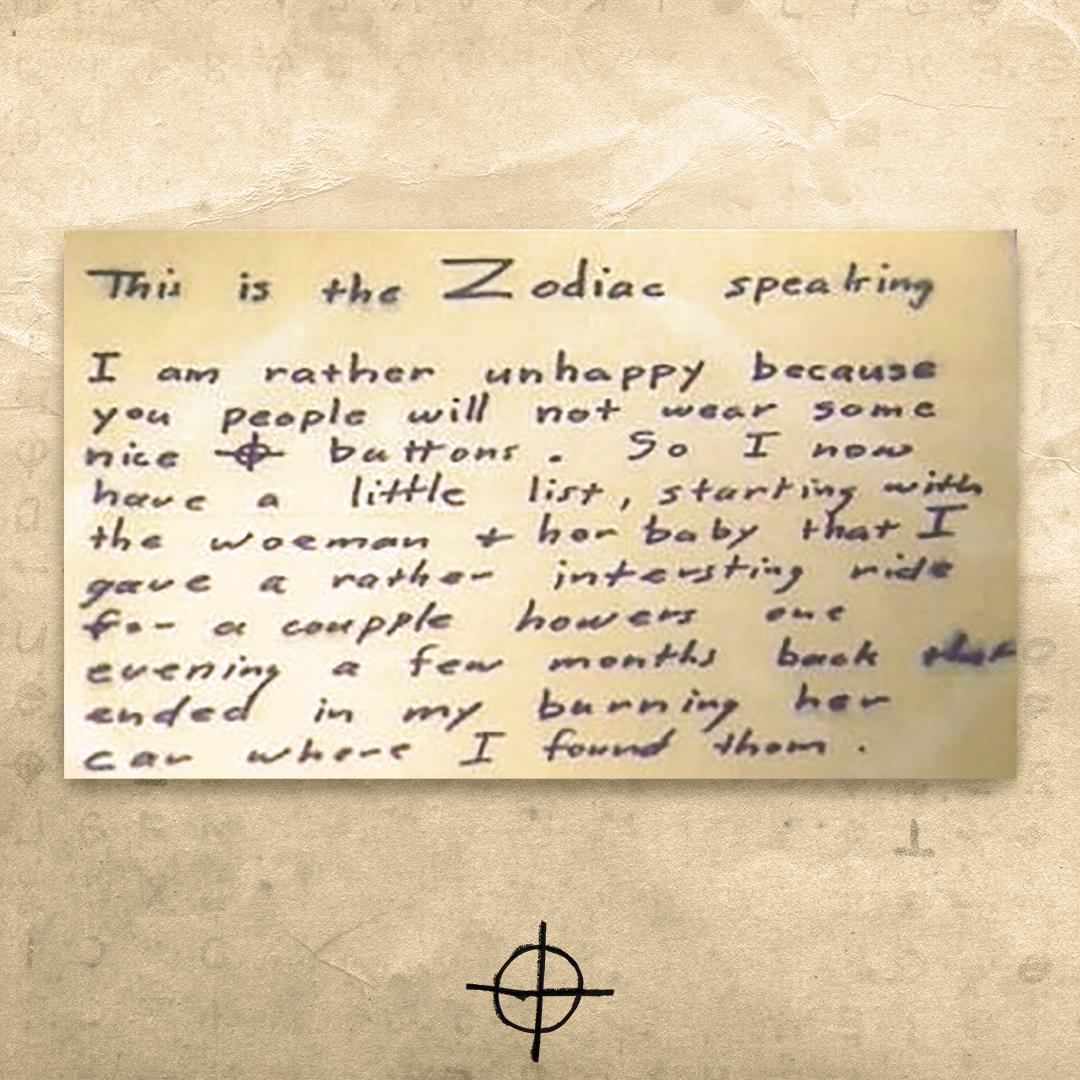
8 · Origins
A close encounter with the Zodiac sends investigators to Riverside, California.
